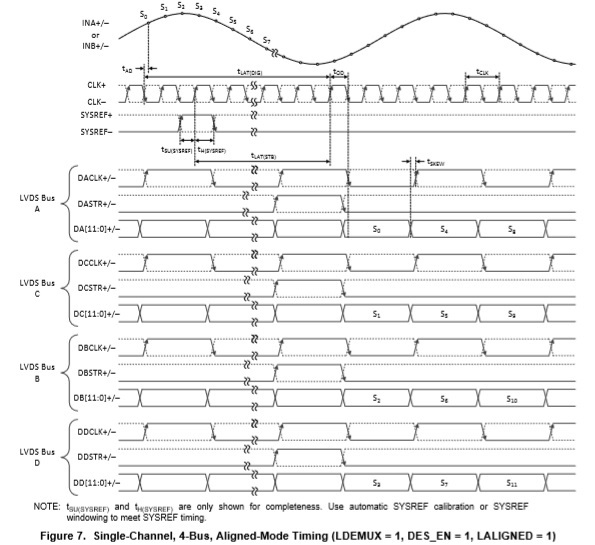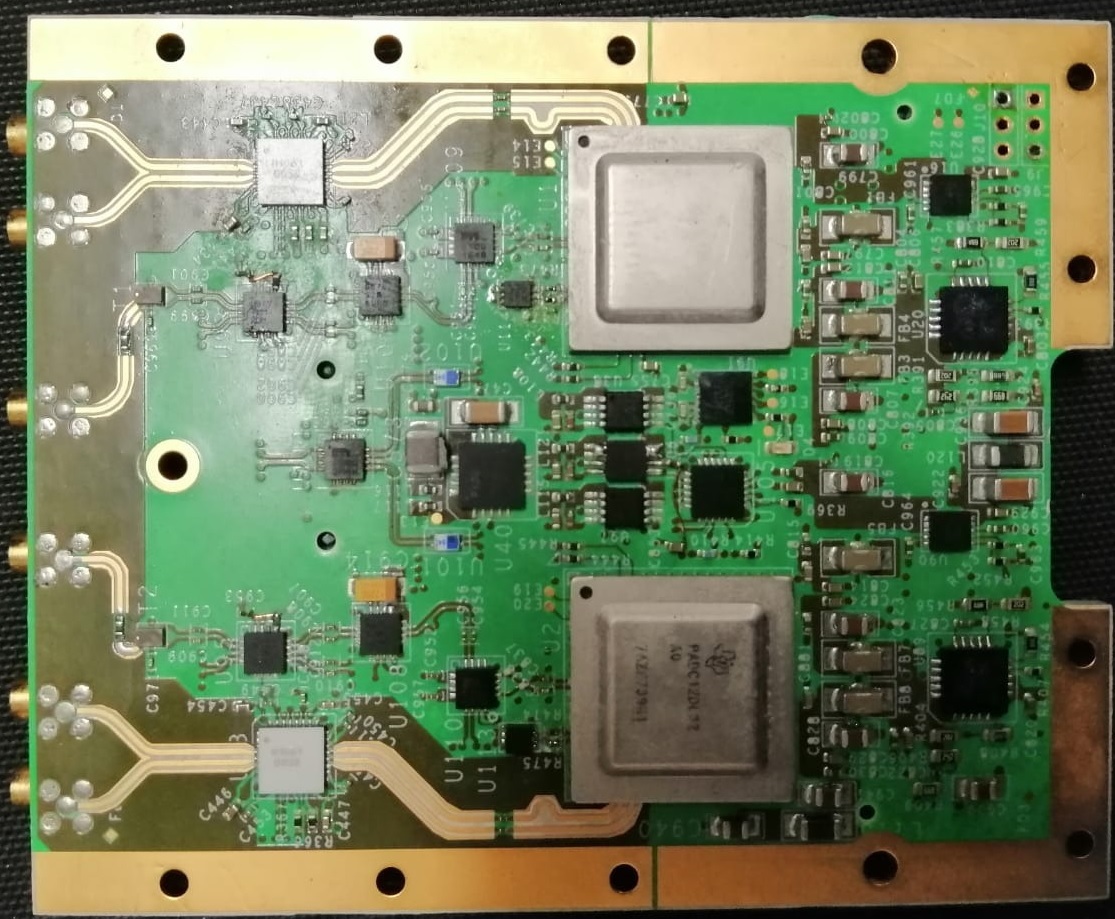Other Parts Discussed in Thread: TINA-TI, , LMX2594
Tool/software: TINA-TI or Spice Models
Hi,
I'm design a board with four ADC12DL3200 and now I'm trying to sync the ADCs.
I've enabled the SYSREF receiving setting
- SYSREF_RECV_EN = 1
- SYSREF_PROC_EN = 1
- SYSREF_LVPECL_EN = 1.
I've send SYSREF signals to the ADCs and I've verified that the bits
ALIGNED =1
REALIGNED = 1.
Then I've measured the data phase match and change the phase of a specific SYSREF signal.
I've resetted the ALIGNED and REALINGNED bits and send several SYSREF signals.
After this I've verified that the ALIGNED = 1 but REALIGNED = 0!
Why the SYSREF signals are received but not processed?
Is there a specific comand to able the processing?
i'm looking forward to hearing from you
Regards.
Daniele Sassaroli




